Original Painting versus Copies or Reproductions
Original art has been copied for centuries. Students would learn how to paint like a master by emulating a masterwork. Often reproductions provide a less expensive version of a popular painting. While only one individual or institution may own an original painting, thousands of people may own and enjoy a copy or reproduction of that painting. With the advent of computers, copying techniques such as giclee prints, have become popular and are often difficult to distinguish from the original artwork.
Please note: The Caldwell Gallery’s area of expertise is for original American and western European artwork created up until 1970. We are therefore unable to help evaluate, assess, appraise, buy or sell any prints, copies or reproductions of an original artwork. If you need assistance with these types of artworks, we suggest an internet search for dealers who specialize in those specific fields.
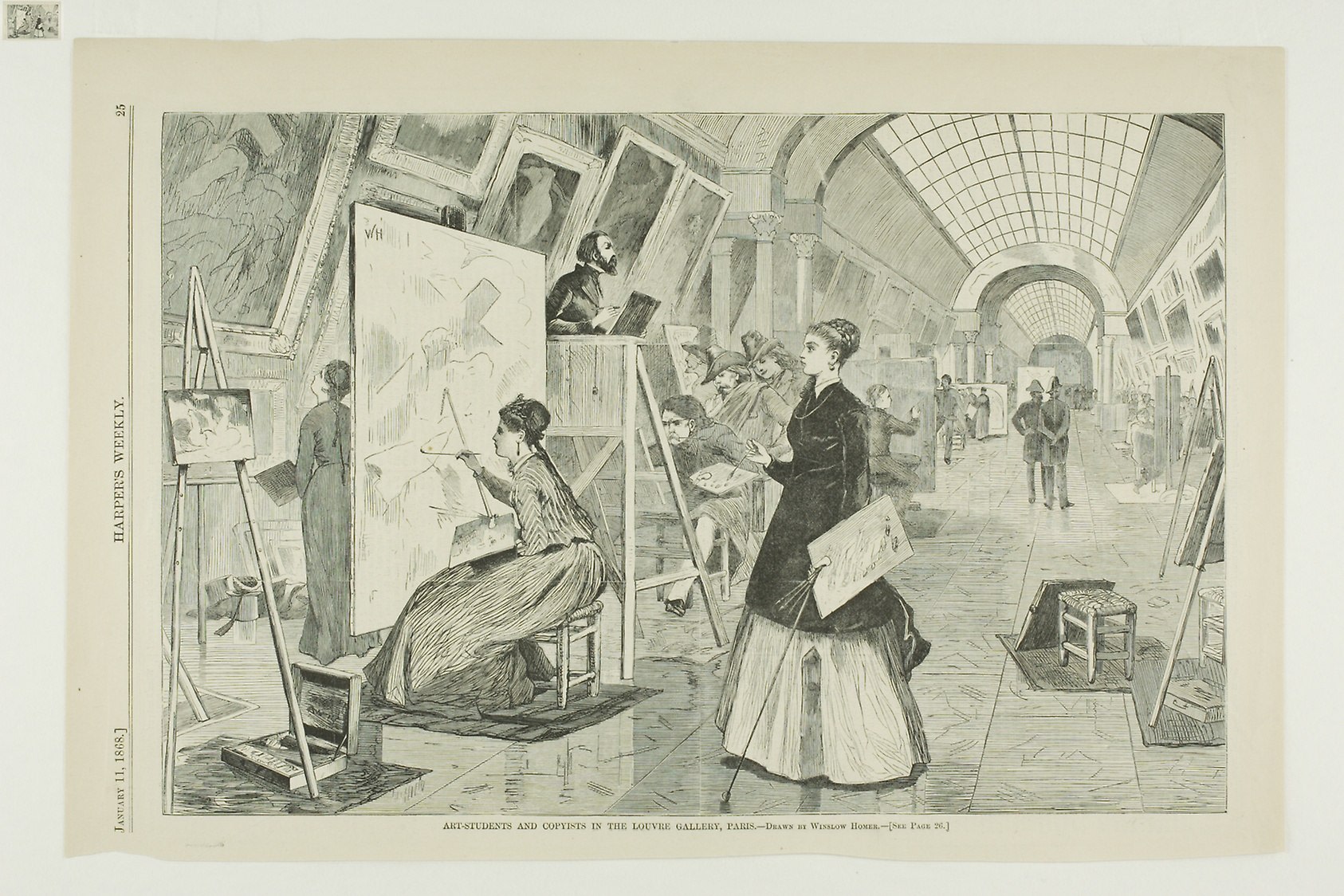
Winslow Homer print depicting Art Students and Copyists at the Louvre in Paris. This print is part of the Art Institute of Chicago's collection.
Here are some basic tips that you can use to try to determine if your work is an original oil or watercolor painting or a reproduction of one. If you’re still unsure please get the best photographs you can, forward them to us via this form, and we will attempt to assist you.
To examine an artwork yourself you’ll need:
Magnifying glass or Jewelers loupe
Good light (preferably sunlight)
Surface
Original paintings are most often executed on canvas, panel, paper or wood.
Copies of original artwork is typically done on stock paper or cardboard.
Front (Recto)
With oil and acrylic paintings the texture of the paint is often quite evident, and the brushstrokes will match the colors. Original paintings also may also have paint colors that overlap one another.
Watercolor paintings typically have impressions from the brush which will show up under magnification. Another good way to determine if a watercolor painting is real is to look for pencil sketches under the painting itself. Many watercolor artists sketch out their idea before they pick up a brush.
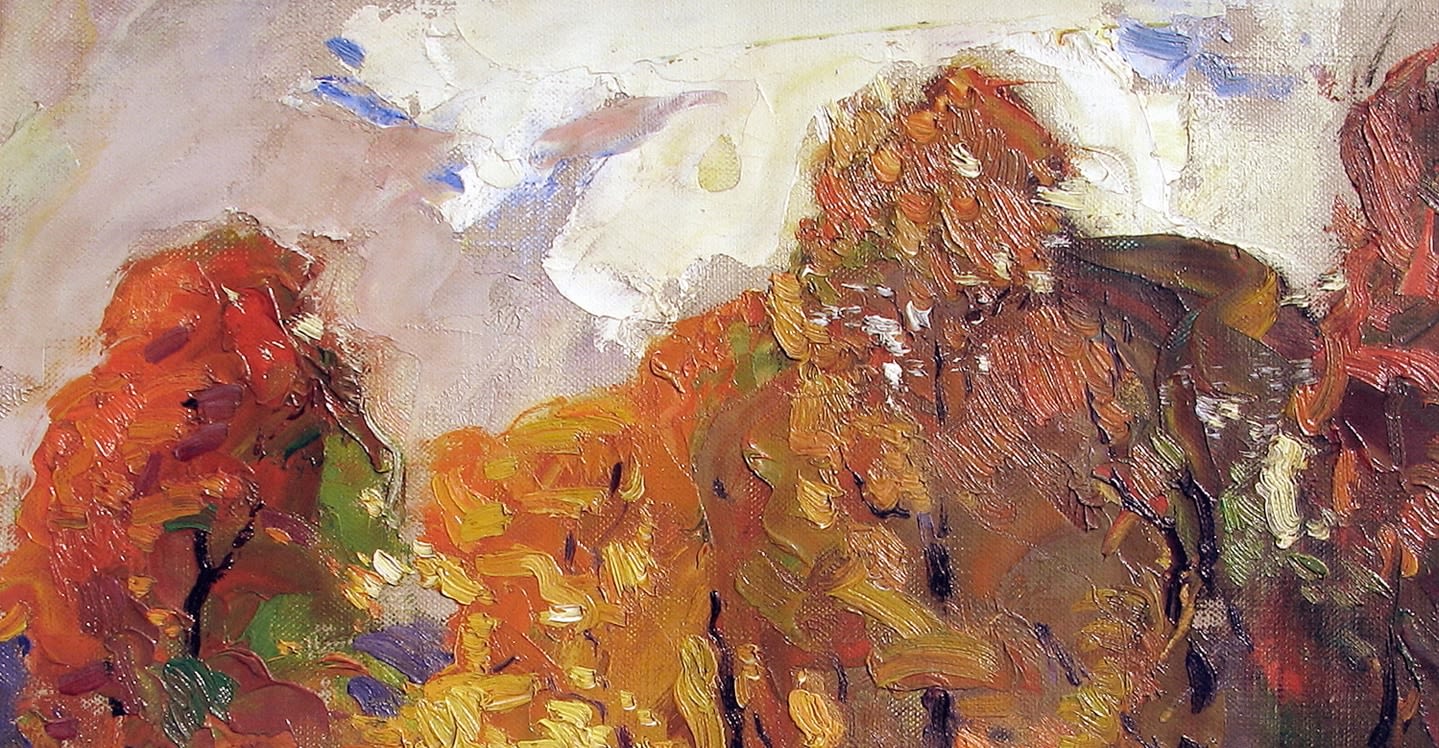
In this close up of a Vaclav Vytlacil oil painting the differences in the layers of paint thickness is one indicator of an original painting vs. a copy.
On an original oil or acrylic painting often the paint at the edge of the work is rough or has an uneven application. This is because the artist anticipated the unfinished edge would be covered up by a frame. Another indicator in older original paintings, is the use of nails to attach the canvas to the stretcher.
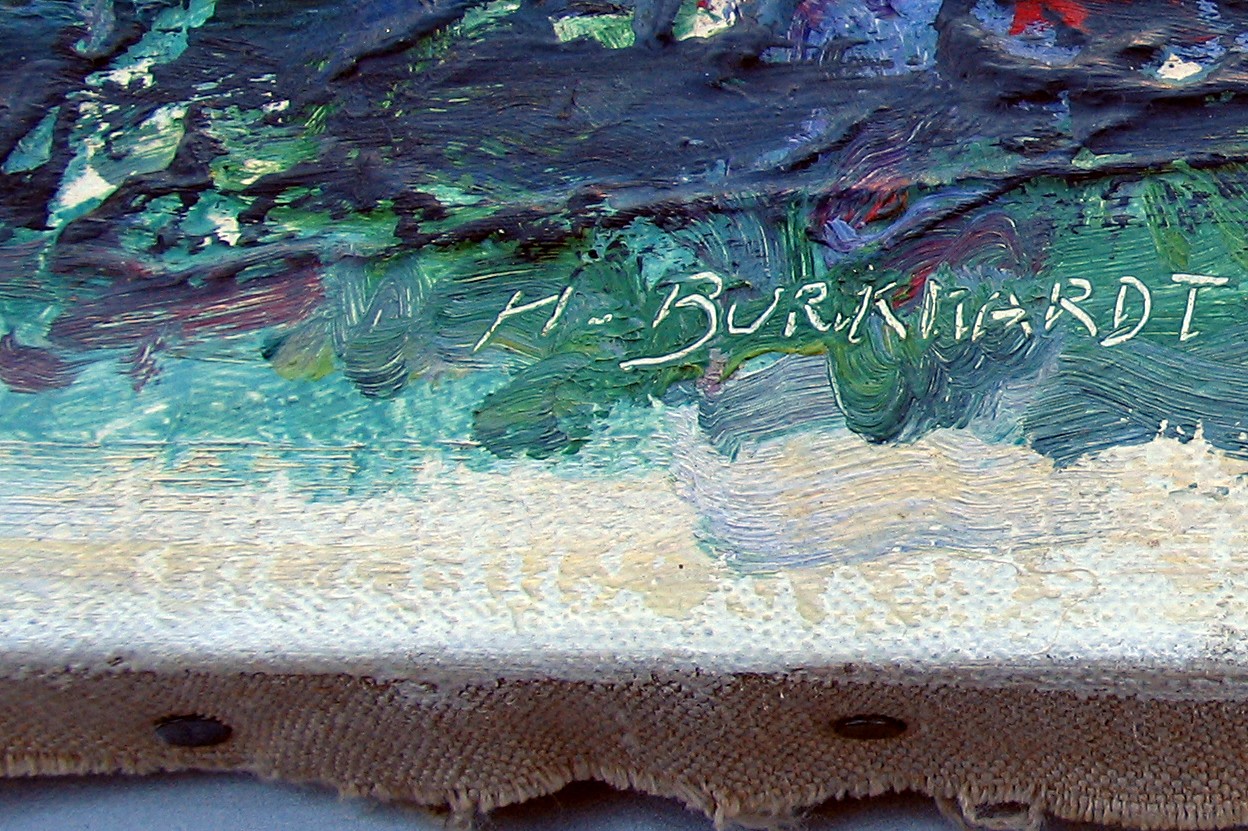
Uneven paint along edge with nails anchoring the canvas to the stretcher are both indicators of an original canvas.
Copies or prints of artworks are typically flat and smooth. Sometimes copies are printed on textured paper that has “brushstrokes” pressed into the paper or false brushstrokes applied in a varnish or shellac which attempt to emulate an artist's brushstrokes. This type of copy is easy to distinguish because the faux brushstrokes are uniform, usually quite short in length, and will not match the colors or patterns below each "brushstroke."
Look closely to see if the brushstrokes match the painting image. For example, if one brushstroke goes from a white cloud and continues into the blue sky it is most likely a texturized print, not an original painting. An artist would have had to change paint colors, so the brushstroke would have ended with the color change between cloud and sky.
Lithographs, print series or limited editions are often labeled as such on the back, which is a helpful indicator the artwork is not a one-of-a-kind piece.
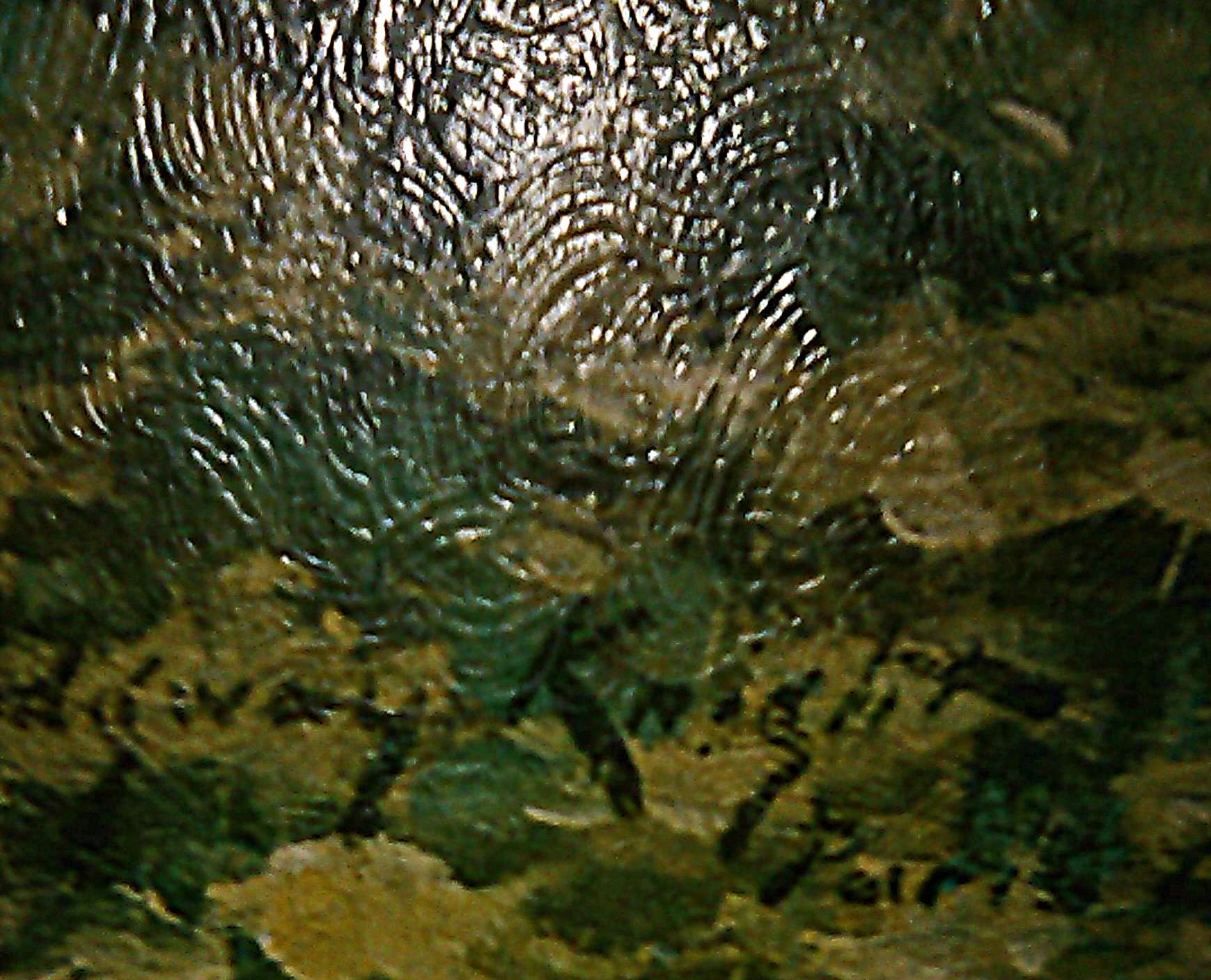
Photomechanical reproduction showing varnished "brushstrokes" on top of a print.
Dot Matrix
Photo-mechanical copies often have a “dot matrix pattern” which is visible under magnification. Below are a section of a Julio De Diego painting (left) and a photo-mechanical reproduction of that same section (right) which shows the dot matrix pattern.
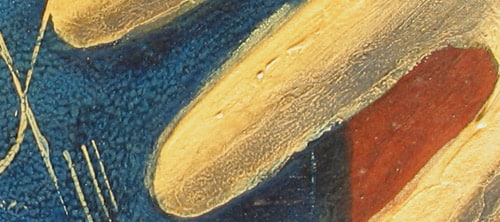
Here is a close-up portion of a Julio De Diego painting showing unique brush strokes and paint application, especially visible along the fingers and the left blue portion.
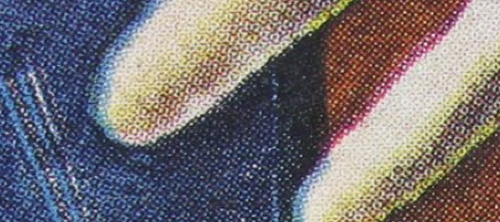
Here is a close-up from a photo-mechanical reproduction of the painting when it was featured in Life Magazine. Notice the dots of ink which form a pattern.
Signatures
Often on prints there will be a duplicate signature as seen on the Aiden Lassell Ripley print below right. The original watercolor signature (below left) is crisp and clearly legible. When this work was made into a print the printing company added a second signature on the far right of the print, along with the title of the artwork on the far left. It is also possible in this side-by-side comparison to see how the colors shift from the original watercolor painting to the printed version of that painting.
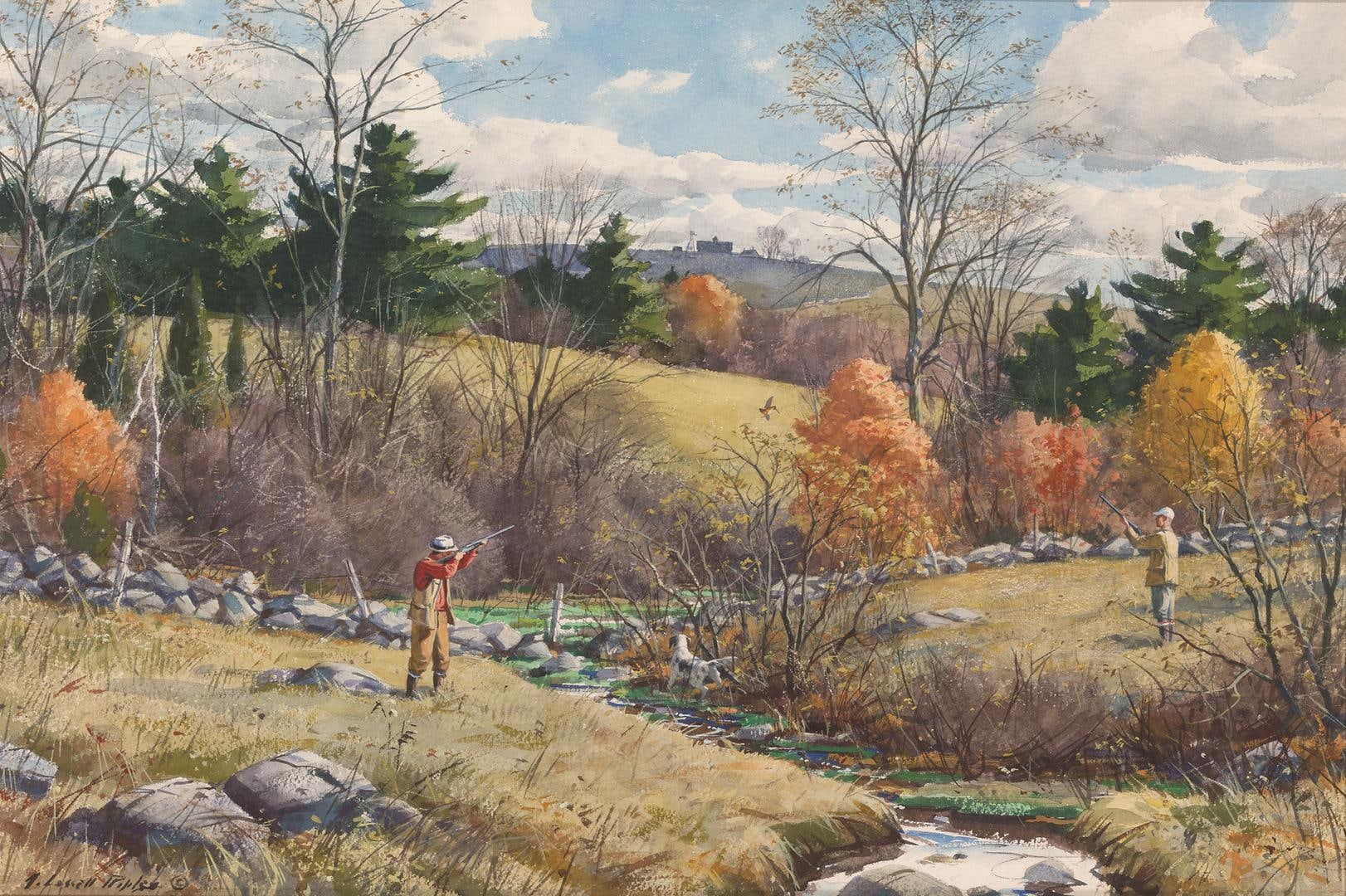
Original watercolor signature lower left.
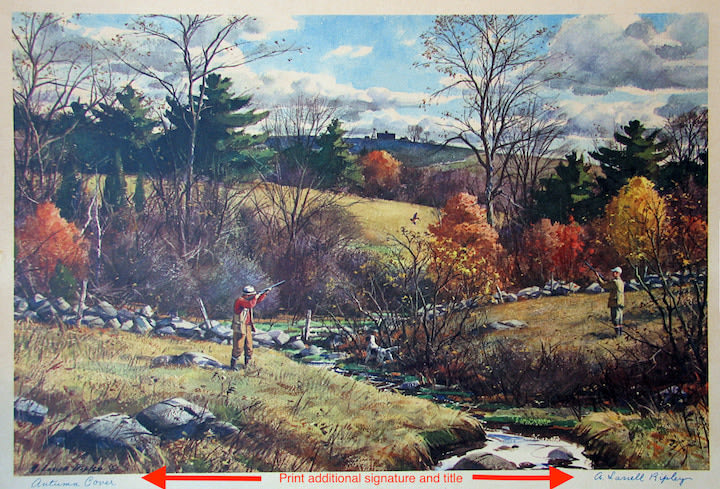
Additional signature and title on print version.
Back (Verso)
Below are backs (also known as verso) of two paintings. The first shows original hanging wire and label. It is clear this painting was done on canvas as you can see the backside of the canvas along with the stretcher. Original works sometimes have labels from shows or galleries. It is important that labels not be removed as they help to tell the history of a piece. Some artists may also sign, title and date a work verso as seen in the second painting below.
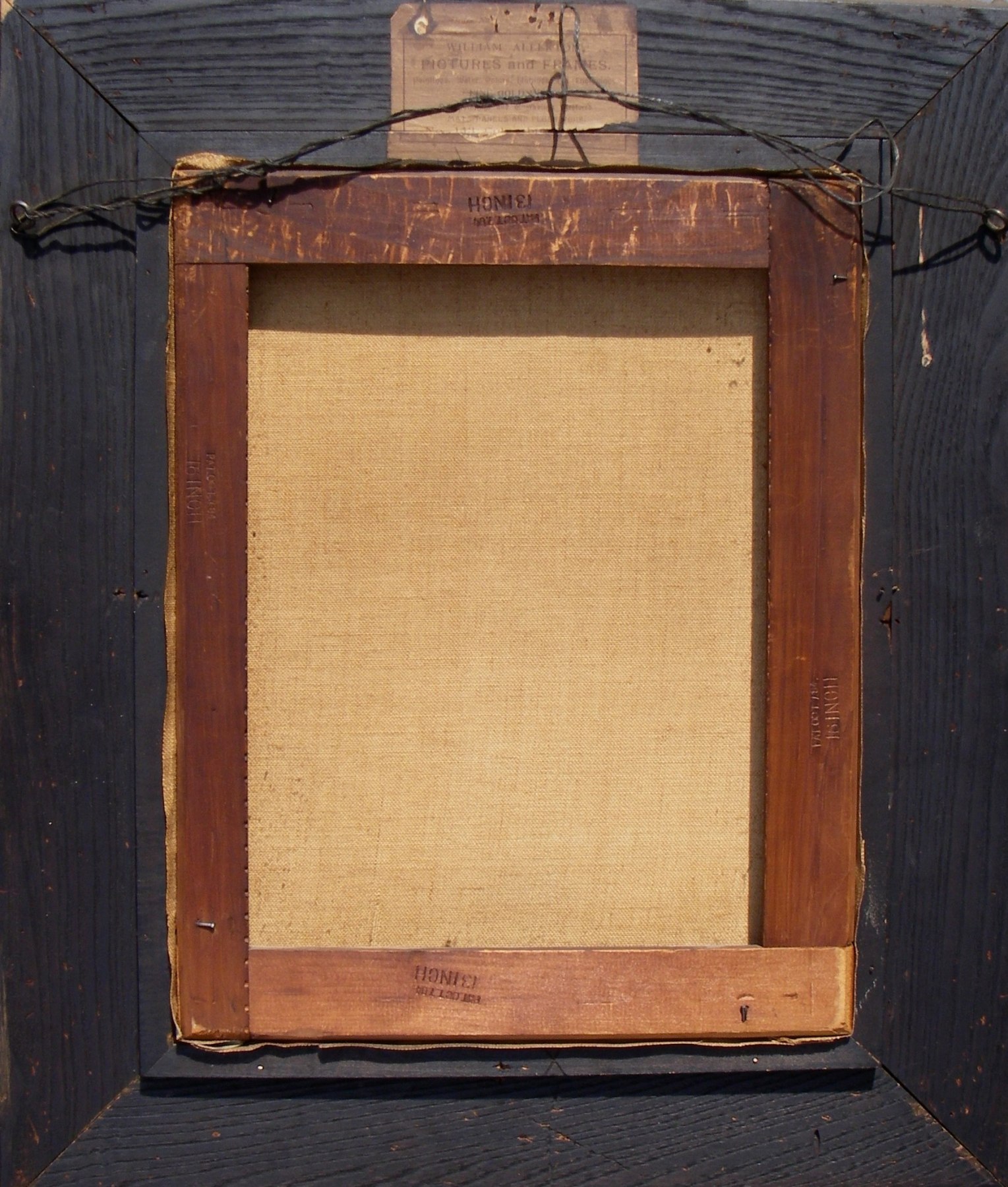
Verso of painting by John Leslie Breck. The wire and canvas are two indicators of expected age for a painting created circa 1895.
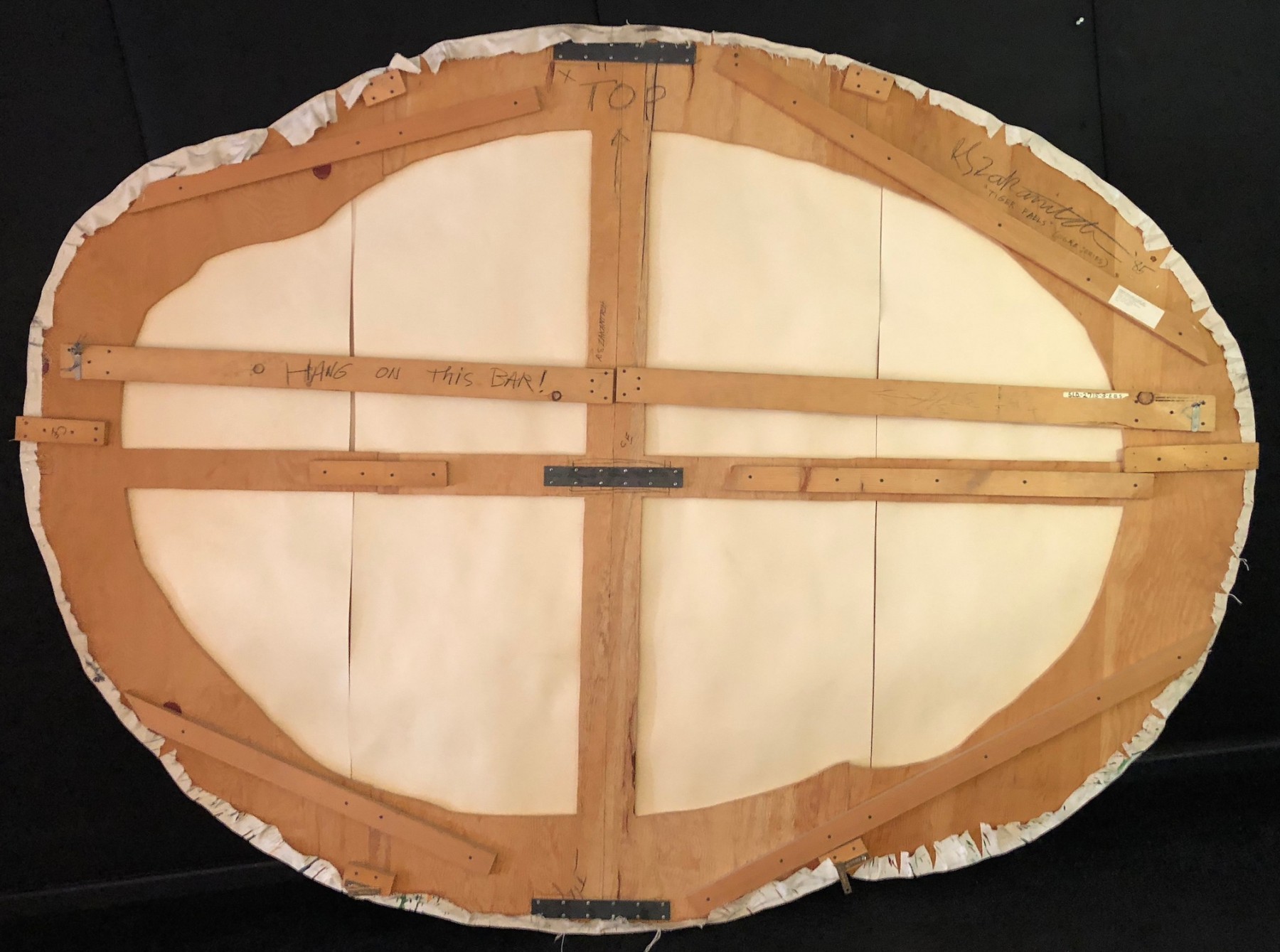
Verso of Modernist painting by Robert Zakanitch showing verso signature, title, date, hanging instructions, and gallery label.
